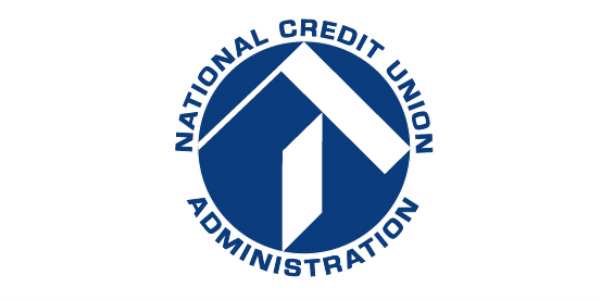What you may not know about the NCUA budget

Starting in May of each year, NCUA begins the rigorous process of developing the following year’s budget using a zero-based process.
Some people have asked me what zero-based budgeting means:
- It means every position and every expense must be individually justified.
- It also means our budget is developed from the bottom up.
Zero-based budgeting at NCUA begins with a field-level review of every credit union to determine the number of workload hours that will be needed for the upcoming year. Field staff recommends the number of hours to supervise each credit union based on asset size, complexity, and financial trends.
Workload estimates are then refined by each level of management in the field, until the budget proposal is forwarded to NCUA’s Central Office for extensive review and analysis.
The 15 offices within NCUA headquarters are also rigorously evaluated to ensure resources are allocated efficiently toward priority needs. We don’t just carry over amounts that were budgeted or spent in the prior year. We require every office to explain the merits of every line item, the specific needs for every spending category, and the basis of developing every cost estimate.
Throughout the budget process, the Executive Director and the Chief Financial Officer brief each Board Member multiple times on budget proposals that are submitted, updated, and recommended. So the budget is thoroughly vetted at every level of the agency.
Lowest Budget Increase in 7 Years
As a result of the intense analysis, scrubbing, and reviews, I am pleased that NCUA’s 2015 budget includes the lowest increase in seven years.
The 4.2 percent increase ensures that we have the resources to efficiently do our jobs—protecting the safety and soundness of credit unions and being a vigilant steward of the National Credit Union Share Insurance Fund—in a manner that recognizes our operating costs are borne by the credit unions we regulate and insure.
Cutting the Budget Is Not an Option
I know there will always be those who argue that NCUA should cut the budget—and that any increase is too big.
Cutting the budget, however, is not an option. Like all businesses, this agency faces non-discretionary costs that tend to increase each year, such as:
- Health care;
- Travel and hotels;
- Telecommunications;
- Leased and owned property;
- Hardware and software; and
- Maintenance and repairs.
So the only way to materially cut the budget would be to substantially cut staff.
Reducing Staff Leads to Higher Losses
Let me remind you: NCUA made the mistake of cutting staff in the years leading up to the Great Recession. NCUA cut 71 full-time equivalent staff (FTEs) between 2001 and 2008. To keep costs down, the agency employed a smaller exam force, cut back to 18 months between exams, and had fewer office staff analyzing Call Reports.
The result was that NCUA was unable to identify many credit unions’ problems soon enough to save them from losses.
Another argument some stakeholders make is that NCUA should reduce staff each year as the number of credit unions declines.
However, that argument has a fatal flaw: Most of the insured shares and troubled assets from those credit unions do not disappear; they are acquired by other credit unions.
So the remaining credit unions are growing larger and more complex, posing greater concentration risk to the Share Insurance Fund.
Specialists Support New Credit Union Powers
Larger, more complex institutions require more examiners with specific specialties in certain operations—from sophisticated investments, to specialized lending, to cutting-edge technology.
In addition, credit unions have requested new powers—like derivatives and asset securitization—which require enhanced supervision.
I have often said that NCUA needs to keep up with the industry that we supervise. So, our budget is intended to ensure that NCUA’s supervisory expertise will keep pace with credit unions’ expanding business opportunities.
Specialists are critical to identifying and resolving traditional risks such as interest rate risk, credit risk, and concentration risk, as well as new and evolving operational risks including cybersecurity threats. To address these risks with a heightened focus on efficiency, this budget would reallocate 18 existing regional staff from generalists to specialists in capital markets, real estate and business lending, and information systems.
The 2015 budget will also achieve other important goals and objectives of NCUA’s Strategic Plan:
- Developing financial literacy and consumer protection programs;
- Providing guidance to small credit unions; and
- Strengthening cybersecurity within the agency and throughout the credit union system.
It’s important to note: The nine new positions for 2015 will be offset by eliminating five general examiner positions. That’s how we arrived at a net increase of only four FTEs.
NCUA Is a Leader in Budget Transparency
Stakeholders may be surprised to learn that NCUA discloses considerably more information about our budget and spending than independent federal financial regulatory agencies are required to make available to the public. NCUA even provides more financial information than credit unions are required to provide to their own members.
This year, although we are not required to do so, we are providing even greater detail on the NCUA budget:
- Our publicly posted Board Action Memorandum is twice the length it was in previous years and contains a much greater level of budget detail.
- For the NCUA website, we’ve disaggregated the top five budget categories that are rolled up in the Board Action Memorandum and broken down each category for all 21 NCUA offices—something we have never done before.
- Also for the first time, we are posting five fact sheets about the NCUA budget.
The fact sheets go beyond the numbers:
- The first sheds light on transparency; it includes links to all the information posted on NCUA’s budget, as well as NCUA’s spending throughout the year.
- The second outlines the budget development process in even more detail.
- The third describes the Information Technology Prioritization Council—the panel I created to weigh the costs and benefits of all proposed IT projects before they are included in the budget.
- The fourth outlines NCUA’s procurement process, which explains how we use contractors where appropriate rather than hiring permanent FTEs.
- The fifth will describe major line items where we achieved budget savings for 2015.
The bottom line: The 2015 budget is not only more transparent; it will cost-effectively provide NCUA with the necessary resources to achieve the agency’s mission as both regulator and insurer. The budget is designed to protect the safety and soundness of America’s federally insured credit unions and to ensure that no credit union member will lose a penny of their federally insured deposits.





